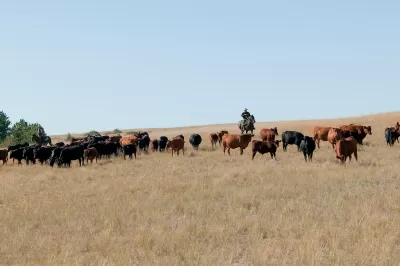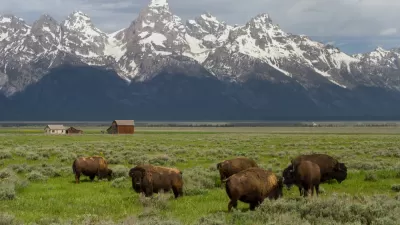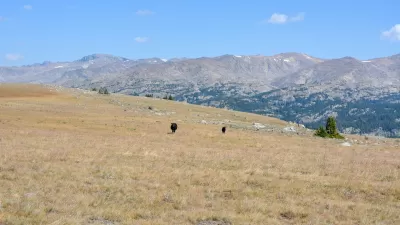Grazing lands under the agency’s management are not meeting its own criteria for ecosystem conservation and sustainable use.

An analysis from the Public Employees for Environmental Responsibility (PEER) reveals that the Bureau of Land Management (BLM) is failing to meet agency standards in caring for the 56.7 million acres of rangeland under its purvey, writes Jimmy Tobias in High Country News. “Particularly hard-hit are the high, cold deserts of Nevada, Wyoming and southern Idaho; In Nevada alone, approximately 22 million acres of public grazing land do not meet health standards.”
The report found that the BLM did not conduct health assessments on 24 percent of its grazing lands between 1997 and 2023, and half of those that were evaluated failed to meet standards for water quality, watershed protection, and conservation. “It’s not just overgrazing; invasive weeds, wildfires, off-road vehicle use, drought and more all contribute to the deteriorating health of the public domain,” Tobias explains. Bureaucracy, too, plays a part: “Thanks to a loophole embedded in the Federal Land Policy and Management Act, the agency isn’t required to complete environmental reviews before reissuing grazing permits to ranchers.”
Historically, the BLM has bowed to pressure from ranching interests, doing little to combat illegal grazing and other destructive practices. A new rule issued by the Biden administration last month expands the land health evaluation program to include “all surface acreage under the agency’s purview.”
FULL STORY: Federal grazing lands fail their checkup

Study: Maui’s Plan to Convert Vacation Rentals to Long-Term Housing Could Cause Nearly $1 Billion Economic Loss
The plan would reduce visitor accommodation by 25,% resulting in 1,900 jobs lost.

North Texas Transit Leaders Tout Benefits of TOD for Growing Region
At a summit focused on transit-oriented development, policymakers discussed how North Texas’ expanded light rail system can serve as a tool for economic growth.

Why Should We Subsidize Public Transportation?
Many public transit agencies face financial stress due to rising costs, declining fare revenue, and declining subsidies. Transit advocates must provide a strong business case for increasing public transit funding.

How Community Science Connects People, Parks, and Biodiversity
Community science engages people of all backgrounds in documenting local biodiversity, strengthening connections to nature, and contributing to global efforts like the City Nature Challenge to build a more inclusive and resilient future.

Alabama: Trump Terminates Settlements for Black Communities Harmed By Raw Sewage
Trump deemed the landmark civil rights agreement “illegal DEI and environmental justice policy.”

Dear Tesla Driver: “It’s not You, It’s Him.”
Amidst a booming bumper sticker industry, one writer offers solace to those asking, “Does this car make me look fascist?”
Urban Design for Planners 1: Software Tools
This six-course series explores essential urban design concepts using open source software and equips planners with the tools they need to participate fully in the urban design process.
Planning for Universal Design
Learn the tools for implementing Universal Design in planning regulations.
City of Santa Clarita
Ascent Environmental
Institute for Housing and Urban Development Studies (IHS)
City of Grandview
Harvard GSD Executive Education
Toledo-Lucas County Plan Commissions
Salt Lake City
NYU Wagner Graduate School of Public Service





























